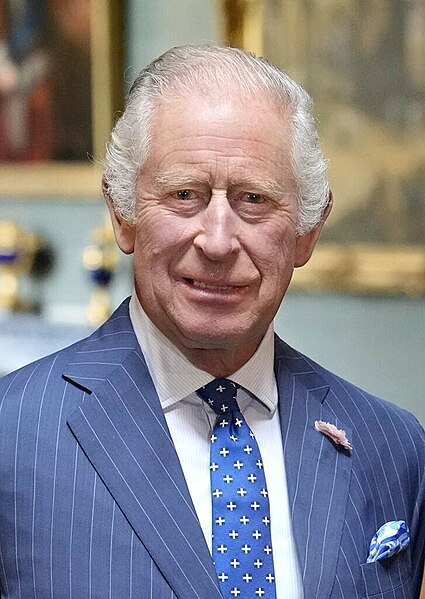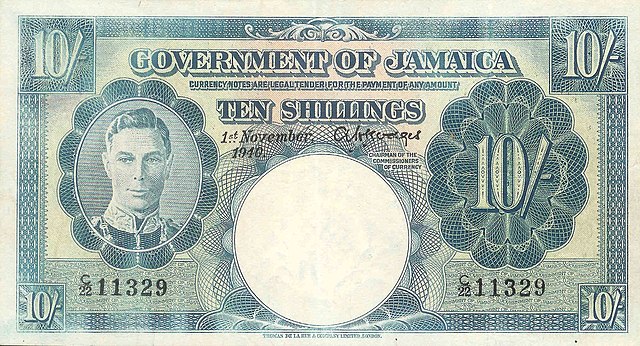The monarchy of Jamaica is a system of government in which a hereditary monarch is the sovereign and head of state of Jamaica. The current Jamaican monarch and head of state, since 8 September 2022, is King Charles III. As sovereign, he is the personal embodiment of the Jamaican Crown. Although the person of the sovereign is equally shared with 14
other independent countries within the Commonwealth of Nations, each country's monarchy is separate and legally distinct. As a result, the current monarch is officially titled King of Jamaica and, in this capacity, he and other members of the royal family undertake public and private functions domestically and abroad as representatives of the Jamaican state. However, the monarch is the only member of the royal family with any constitutional role.
Monarchy of Jamaica
A 1940 Jamaican 10-shilling banknote featuring King George VI
A Jamaican postage stamp of 1956, featuring Queen Elizabeth II
Front page of The Daily Gleaner announcing Jamaican independence
Jamaica is an island country in the Caribbean Sea and the West Indies. At 10,990 square kilometres (4,240 sq mi), it is the third largest island—after Cuba and Hispaniola—of the Greater Antilles and the Caribbean. Jamaica lies about 145 km (90 mi) south of Cuba, 191 km (119 mi) west of Hispaniola, and 215 km (134 mi) south-east of the Cayman Islands.
Statue of Cristopher Columbus in St. Ann Parish
Henry Morgan was a Caribbean pirate, privateer, plantation owner and slaveholder; he had first come to the West Indies as an indentured servant, like most of the early English colonists.
Harbour Street, Kingston, c. 1820
Marcus Garvey, father of the Back to Africa Movement and Jamaica's first National Hero








